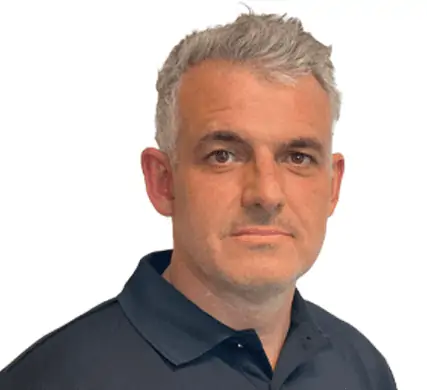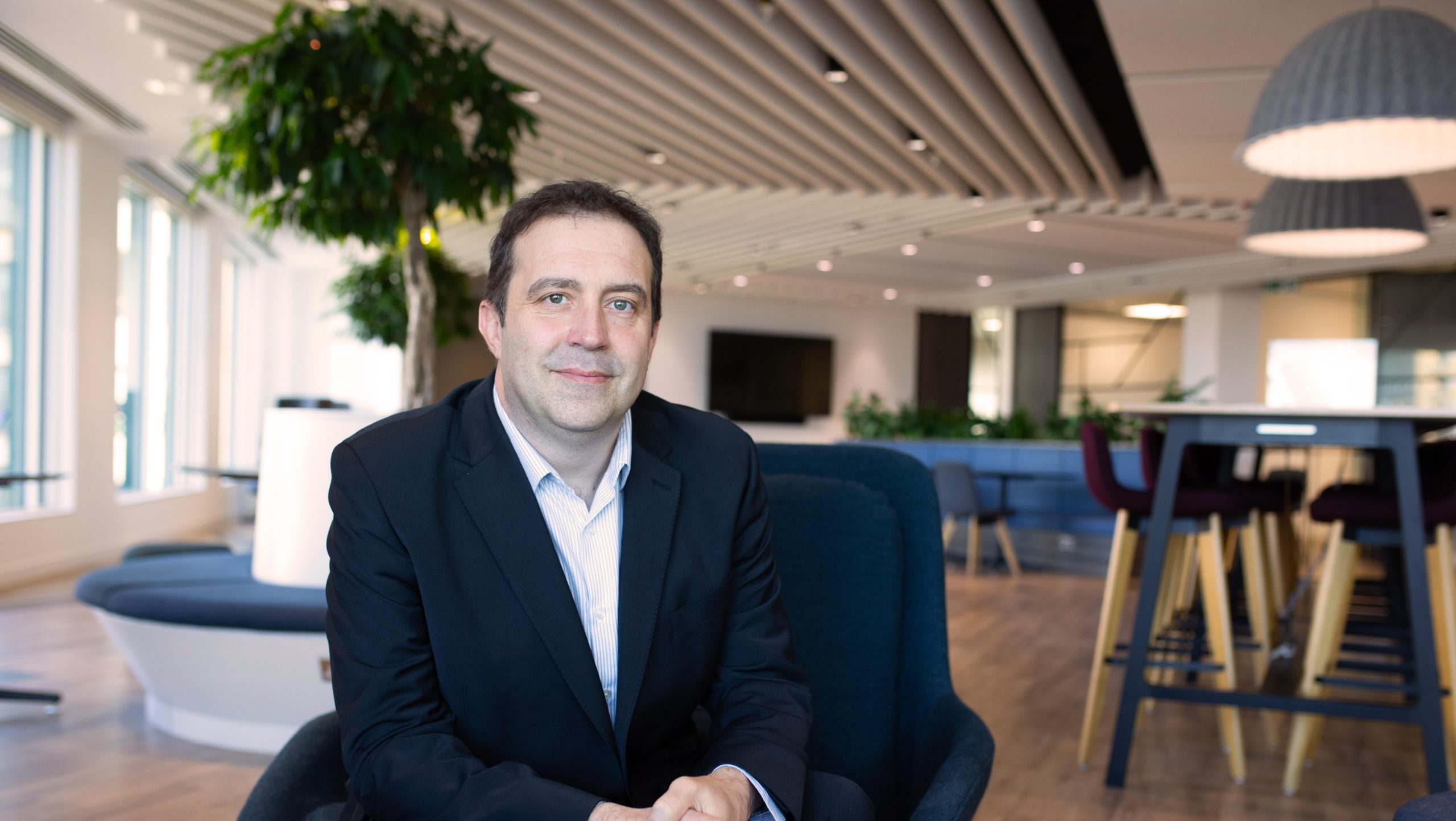
14min read
A catch up with…Paul Johnson
“From famine to feast“

Paul Johnson, CEO of Power Metal Resources plc
They say a rolling stone gathers no moss, but the collection of experiences gathered by Paul Johnson, in a varied career, has not only given him the tools to build a promising portfolio of mining project ‘packages’, but also to appreciate the value of proper business discipline for increasing the odds of success in a risky industry.
“I trained as an accountant because I didn’t really know what else to do,” jokes Paul. From qualifying as a Chartered Accountant in Dudley in 1995, he spent a year in a ‘Big 6’ firm in Birmingham then quickly moved to qualify as a Chartered Loss Adjuster handling major-loss commercial insurance claims. That forensic accountancy work in insurance saw Paul recruited by a large American property insurance company helping to assess large scale commercial loss risk for their leading global clients. All this set the backdrop to Paul establishing his own risk management business in 2008. Timing was not great, however. “It was just before the global financial crisis which was a disastrous move,” says Paul.
“I was at a cross-roads. I could go back into the world of forensic accountancy work and make a reasonable salary, but I wouldn’t be able to achieve anything significant, so I decided to focus on investing. I used the skills I had learnt to look at the stockmarket and AIM in particular, to identify undervalued companies.”
Paul started in December 2008 with a small portfolio and by 2010 had secured a +150x return on his original portfolio. “I focused mainly on cash burn business models including small biotech companies, some early stage technology businesses and principally junior resources (a small company that is developing or seeking to find and develop a natural resource deposit) – what you would call super high risk,” explains Paul.
He discovered that there was very poor quality information in the mining and exploration sector for private investors. “There were lots of analysts producing reports that used big words: jurassic, proterozoic, just trying to impress,” says Paul. “So with a fellow investor we created MiningMaven, an investor relations website, and introduced value propositions, effectively business model analyses, for junior resource companies. We analysed management capability and experience, financial and operational strategies and their implementation, marketing and communications, and use of technology. The idea was to make the exploration sector accessible to all investors by looking at these companies from multi-disciplinary perspectives.”
Ten years ago Paul joined the board of one of MiningMaven’s clients, ECR Minerals plc. It was the first of many such moves. He has now been on the board of eight UK companies: Greatland Gold Plc, Thor Mining Plc, Metal Tiger plc, Metal NRG plc, China Africa Resources plc, Rockfire Resources plc and Power Metal Resources. “Recently, I managed to pass my longest ever service period in any one plc, ” he laughed. He is also a director of Value Generation Ltd, a family investment and advisory company formerly focused on risk management services generally and now focused on the natural resource sector.
That’s some journey. “I’ve moved around quite a bit in the last ten years, restructuring and refinancing many plc businesses. I’ve put in new projects, new management teams and new finance to restart them. Over the years, I have probably been involved in corporate work and financings raising close to +£75m,” he says.
He initially used his private company, Value Generation, as the vehicle for restructuring and related work, but has now brought the work into a public company, Power Metal Resources, which is listed on AIM.
“In 2019 we raised £1m to get what was African Battery Metals, which became Power Metal Resources in July 2019, back on its feet and back on the market with a new management team with a new kind of ethos,” explains Paul. “We started in February 2019 with three legacy exploration projects looking for gold and base metals in West & Central Africa. Then we started to build-on additional projects. Some were acquired outright for shares and cash, some we created ourselves by going to certain parts of the world and staking ‘our own ground’ – where we put in applications for resource ground to explore. We’ve built the company up to a 14-15 project package business spread across North America, Africa and Australia: safe jurisdictions where there’s still plenty to go at, and we currently target ten metals working in six different countries,” he adds.
The metal mining industry is feast or famine, according to Paul. “People can make vast amounts of money from very little, but the opposite is also true. For much of the last 3 years there has been little interest in the junior resource sector – it’s a very niche world, but given world events I expect that will change. There will be buy recommendations for all sorts of junior resource shares in the mainstream press soon,” he predicts.
Why is it going to change? “In the morning, when you make a cup of tea, the kettle you use to boil the water depends on metal in the element and copper in the wiring. The cars we drive or the public transport we use depends on metals and that dependency increases significantly with electric vehicles. The same applies to our phones and to our IT equipment generally.” Paul explains. “Everything you do in life requires metal. Traditional western nations are continuously demanding more and there are huge parts of the world that are now seeing dramatic growth in metal demand as they develop at pace. We often hear of progress being achieved in China, India, South America and Africa – and they’re consuming huge amounts of metal.”
“But for the last 20 years, there’s been a massive under-investment in development of the next major discoveries or adequate funding for the junior exploration companies that often find them,” says Paul. “Larger firms have often developed the projects they have, but not necessarily sought to secure a pipeline of new projects for when their existing resources run out. We now have a world where world leaders at COP 26 are making environmental promises – to move to electric vehicles, invest in wind farms, etcetera, but there’s very little supply of the metals to execute on the plans and very few new projects or big new discoveries to meet the burgeoning massive demand.”
“The demand for metals will be enormous and money will come into our space,” he says. “The world now knows it needs nuclear energy which needs uranium, and Power Metal has considerable uranium interests. China has traditionally been the world’s largest supplier of tungsten which is used for various industrial applications including hardening for tooling – and ironically there’s going to be a lot of demand for industrial equipment as the world grows in line with its aspirations. Through Power Metal’s subsidiary, Golden Metal Resources we have the largest established tungsten resource in the USA. Military action and geopolitical instability have rocked the security of supply of many of the world’s commodities including nickel, as well as platinum and palladium, rare earths, etcetera,” he adds. “We’ve not seen this dynamic in the world, at this magnitude of significance, ever before in the metals space.”
“We’re also going to see big inflation which will drive the sensible money towards hard assets and commodities – gold, silver, copper, nickel, zinc. We are already seeing historic price rises in these metals.”
Paul has built up Power Metal Resources’ project portfolio in a period of general sector famine. “That’s when you get the best projects at the most reasonable prices,” he says. “If you’re going to do deals, you’ve got to do them when nobody else wants to do them. Then you hold on to those projects. We have stretched ourselves to build this portfolio – juniors generally don’t take on 14-15 project packages!”
The term ‘Package’ is used because within many of the project packages are multiple individual projects. For example, in the Athabasca Basin uranium package in Saskatchewan, Canada, there are actually 7 projects under one umbrella. “If I said we had effectively 45 projects, people may think we were completely barmy, but that’s effectively what we’ve got, and that is what you can do in times of sector famine” he adds.
“The idea was to deal with the pain and the work of keeping the projects in good standing and move each one forward up the first valuation curve – from an interesting project that might have metal in the ground, to confirmation of metal in the ground. At that point we ask ourselves if we want to develop the project internally, with our own exploration, or do we put the project package into a separate vehicle to list it on an exchange, or dispose of it, to create a value crystalisation event for the company,” explains Paul.
It’s an unusual structure for the exploration industry which is usually a cash burn business like biotechnology or fintech companies, which raise capital from investors to spend on operations in the hope of finding something that has real value that can be developed into a product and be sold to a big company for a large sum.
“The chances of doing that in exploration is remote,” says Paul. “Mark Twain is quoted as saying: ‘A mine is a hole in the ground with a liar on top’ and from what I have seen as an investor it feels difficult to argue with that theory sometimes. Most of the companies that you see in the junior resource space will never find a major discovery. Most of the people that work in those companies will not find a major discovery in their careers. It doesn’t mean that investors can’t make money in those shares along the way or indeed, that the managers of those companies don’t make a lot of money for themselves, but the chance of transformative success through discovery is low.”
According to Paul, you can increase the odds of success even in such a risky business environment. “You deal with each project as a proper business, that has to wash its own face,” he says. “You diversify; you invest in new projects at difficult times when you can acquire the best projects on reasonable commercial terms; and you ensure that each project is well funded, has management attention, a good operational plan with strategic objectives, and then you start to hack away at the odds.”
Out of the project universe, many will be legacy projects that keep doing the rounds, says Paul: “Weed out those ‘journeyman’-type projects and you reduce the odds. Most projects fail because they don’t have enough capital deployed, so deploy it and reduce the odds dramatically. If you have enough working capital in your business you can deploy the right technical expertise, focused on capital gains rather than salary. You’ve got to put proper operational planning in place; we have a fundamental commercial ethos about doing the business properly in a disciplined way – and that drops the odds again. Then it’s about whether you can sell your story to the market and get people to invest in you. If you attract capital and the right people, with the right projects and approach, then you end up with a dramatically better chance of success,” he explains.
“I’m not a great believer in luck, or good fortune. I think success is about discipline. As golfer, Gary Player, said: ‘The harder I practice, the luckier I get’. People say that the exploration sector is gambling. It’s not. In gambling you know the odds, in speculation you don’t know the odds. But you can narrow the chance of success down by having a disciplined approach.”
The financial markets themselves make exploration a risky business, according to Paul.
“Most of the people that invest in our space lose money,” says Paul. “That’s because we have a situation in the stock markets where companies fail, but they don’t usually go bust. Their share price grinds down and they raise money at ever lower prices issuing shares at discounted levels and the share dilution kills the earlier shareholders in at higher prices.”
“I would like to see all investors and possibly regulators asking how much management teams are paying themselves, what performance metrics are in place to make sure they’re actually delivering, how the share price is performing, how many announcements they are releasing, whether they are getting qualifications in their audit reports, how many projects have they taken on and when they dropped them, and how much they are writing off from their investments – because that’s people’s money! That’s what, as a lapsed auditor, I would call substantive testing of a business,” Paul says.
Paul predicts that soon there will be a lot more junior resource companies listed on the stock markets. “At the moment there are thousands of metal exploration companies listed in Canada, hundreds in Australia, and about one hundred in London, possibly less,” he says. “London will see a dramatic increase in that number and we want to be part of that new business creation process. But the vehicles we create and the people/management within them will have our same disciplined business ethos and focus on building value.”
“At the moment, because there’s only a hundred companies, investors through London only have a couple of choices in each type of opportunity such as gold in Australia, or graphite in Africa or uranium in North America. The number of companies listed in London will swell when the size of investment capital deployed into the metal space increases, so there will be more capital to support more companies,” explains Paul.
Where will the money come from? “A lot of cheap money has been printed over recent years. A huge proportion of all the US dollars ever printed have been printed since January 2020, for example. That money filters out” says Paul. “We’re also going to see big inflation which will drive the sensible money towards hard assets and commodities – gold, silver, copper, nickel, zinc. We are already seeing historic price rises in these metals. It hasn’t yet filtered out fully to the big companies that are producing these metals, but it’s starting to. It will then filter out to the smaller companies producing these metals, and then it will filter out to the juniors – that’s where we are. I think we’ll see billion dollar valuations on some of these juniors (micro-caps) in due course,” he predicts. “We are the umbrella salesmen in our business – we tend to outperform when things get tricky.”

























